Results 4,631 to 4,640 of 12095
Thread: Anandtech News
-
01-12-15, 01:00 PM #4631
Anandtech: ADATA CES Suite Tour: PCIe & TLC SSDs, Power-Loss Protection Demo, 256GB S
I stopped by ADATA's suite last week to see what the company has been up to in the past six months. While ADATA didn't release or announce anything new at the show, there were plenty of upcoming products on display in the suite.
The SP320 will be ADATA's first TLC NAND based SSD and will be available sometime in the first half of 2015. It's based on Silicon Motion's new SM2256 controller, which supports LDPC error correction that increases the endurance (basically, LDPC can deal with a lot higher error rate compared to traditional BCH error correction). Capacities will range from 120GB to all the way to up to 960GB, but the exact specifications are unknown at this point.
Moving on to PCIe, ADATA was showcasing industrial SSDs based on JMicron's JMF811 and JMF810 controllers. The JMF811 is the full-fledged version with four PCIe 2.0 lanes, whereas the JMF810 is capped to two lanes. Capacities go up to 1TB in M.2 2280 form factor and I was told that the drive is already shipping to ADATA's industrial partners. Obviously, the drive is not a retail version (hence the awkward name), but I wouldn't be surprised to see a client version with the same controller showing up later.
Similar to Computex, ADATA was also demoing the SandForce SF3700 based SR1020. To be honest, I don't really have anything new to share on the SF3700. The live demo ADATA was showing in the suite was just sequential writes, which we have already seen before for a few times. Timing wise Seagate/SandForce is now aiming for Computex 2015, so expect to see a ton of new SSD announcements and releases around June time.
In addition to products, ADATA was showing a neat power-loss protection test platform. The platform consists of a custom PCB that plugs into a USB port along with a special software that interrupts power delivery. The purpose of the demo was to show off ADATA's enterprise SR1010 SSD with full power-loss protection, but ADATA also promised to send us the test platform for use in future reviews.
ADATA was also showcasing a couple of USB 3.0 drives with unique security features. The first one was the UE720, which is otherwise a typical USB 3.0 drive but features a fingerprint scanner to provide an extra layer of security.
The other one was the UC520, which uses Bluetooth 4.0 for security. I'm not sure how exactly the encryption works with Bluetooth, but I assume the drive needs to create a Bluetooth connection with a known computer/tablet/smartphone before the contents can be accessed.
For SD cards ADATA has a new UHS-II type XPG SDXC card with capacity of up to 256GB. The card offers read speeds of up to 150MB/s and is capable of 4K2K recording.
ADATA was also displaying a USB 3.1 compatible SE700 external drive with dual SSDs inside. Sequential performance goes above 800MB/s and the drive will be ready to ship once USB 3.1 platforms are available later this year.
ADATA was one of Intel's original DDR4 launch partners and since the launch ADATA has been able to up the speeds to DDR4-3333.
More...
-
01-12-15, 01:30 PM #4632
Anandtech: MSI Goes USB 3.1 at CES 2015: The MSI Component Suite Tour
Back at Computex we reported that MSI was showing a potential mock-up of USB 3.1 on one of their motherboards. Fast forward a few months and this is slowly becoming a reality, with working silicon and demos on hand, almost ready to ship. MSI also had a few neat custom builds as well as a wide variety of colored GPUs, some with a different fan design.
More...
-
01-12-15, 05:00 PM #4633
Anandtech: AMD Executive Shakeup: Byrne, LaForce, and Naik Leave AMD
Word comes via email and an 8-K filing from AMD this afternoon that AMD’s executive lineup is undergoing a significant shakeup today. All told, 3 AMD executives are leaving the company today: GM of Computing and Graphics Business Group, John Byrne; Chief Marketing Officer, Colette LaForce; and Chief Strategy Officer, Raj Naik. This comes on the heels of an already busy 2014 for AMD’s executive ranks, which saw a business unit reorganization and the promotion of Dr. Lisa Su to COO and then CEO.
Starting from the top then, the highest profile departure – and the only one mentioned in AMD’s 8-K – is John Byrne. Byrne was promoted from Chief Sales Officer to SVP and GM of Computing and Graphics Business Group only 7 months ago, so his tenure as GM has been a surprisingly short one. Byrne is said to be leaving AMD to pursue other opportunities, and unlike Byrne’s original promotion that saw the GM position filled from within, AMD tells us that they will be conducting an external search for the new GM. In the meantime Dr. Su will be filling his position as interim GM.
Second on the list of departing executives is Colette LaForce. Colette has been AMD’s Chief Marketing Officer since 2012, when she joined AMD at that level after leaving as Dell’s CMO. Like Byrne, LaForce is said to be leaving the company, though AMD has offered no further details. Finally, unlike Byrne’s GM position, no interim CMO is being announced.
The last executive departing today is Rajan Naik, AMD’s Chief Strategy Officer. Naik was hired for the CSO position in 2012, joining the company from McKinsey & Company. Like Byrne and LaForce, Naik is said to be leaving the company with no further details available.
In announcing these departures, AMD included a short statement: “These changes, including the additions of Forrest Norrod and James Clifford to our management team last quarter, collectively are part of implementing an optimal organization design and leadership team to further sharpen our execution and position AMD for growth.“
Whether this is Lisa Su merely cleaning house after being promoted to CEO or part of a greater shakeup for the company remains to be seen, and certainly this is the biggest question to come from today’s departures given the unusual mass departure. 2014 has been another rough year for AMD as they continue to seek balance as a semi-custom IP and chip designer, and while they did manage to turn a tiny profit in Q3, we’re still waiting to see how AMD closed out the year with Q4. To that end, AMD will be announcing their Q4 results on Tuesday the 20th, at which point we should have a better idea of what these departures mean for the company and what AMD’s plans are like for the rest of 2015.
More...
-
01-13-15, 01:31 AM #4634
Anandtech: Mushkin Releases New Striker SSD, Displays an Upcoming M.2 PCIe 3.0 x4 NVM
Mushkin had a couple of new and upcoming products in its suite during CES. The first one is a new Striker SSD, which uses Phison's S10 controller coupled with Micron's 16nm 128Gbit MLC NAND. We already took a look at the Phison S10 controller in Corsair's Neutron XT and while it didn't set any new records, it was a decent middle-class controller. My biggest criticism about the Neutron XT was the price, but I'm confident that Mushkin's Striker will be more competitive thanks to more cost efficient NAND and typically Mushkin has been one of the value players.
Availability will be in Q1'15, so expect to find the Striker on the shelves in the next two months or so. Pricing is to be announced.
Mushkin also had the 1TB Reactor on display. It's an SM2246EN based drive with Micron's 16nm 128Gbit MLC NAND and what makes it truly interesting is its $360 price tag (that's $0.36 per GB!). I got a sample right before the holidays and have been testing it since I got back from CES, so stay tuned for an in-depth review within the next couple of weeks.
Moving on to very interesting upcoming products, Mushkin showed off the Hyperion PCIe SSD. It's based on Phison's E7 controller, which is a PCIe 3.0 x4 design with NVMe support. Performance is up to 2.8GB/s for reads and 1.2GB/s for writes and random performance is also very competitive at over 300K IOPS. The controller is still in development and so far there hasn't even been a live demo yet, but I was told that the Hyperion should hit the market during the first half of this year.
For current generation PCIe, Mushkin was showing the XC PCIe drive. Like the most PCIe drives on the market today, the XC is simply four SandForce SF-2281 controller in RAID 0 and as you can see, the drive consists of two modules with each having two daughterboards (i.e. one PCB per controller).
Mushkin also has a version with four SM2246EN controllers in development. The Silicon Motion controller will enable consistent performance with all data types and in addition it supports up to 1TB per controller, hence upping the maximum capacity to 4TB.
And like everyone else, Mushkin had an SF3700 prototype on display. Mushkin will be ready to release a drive as soon as Seagate/SandForce is ready with the controller and firmware, which should be in early Q3'15 from what I have heard.
And no lineup is complete without some DDR4. The DIMMs Mushkin had on display were DDR4-2133 and DDR4-2400, which to be honest is nothing exciting but Mushkin has always been more of a value brand instead of being the first choice of overclockers.
More...
-
01-13-15, 03:03 AM #4635
Anandtech: Diamond Multimedia Updates Networking and DisplayLink Products Portfolio
We made the annual customary visit to Diamond Multimedia's suite at CES. Last year, they had products on display marking their first foray into the networking market. Primarily known in the channel for their graphics cards based on AMD GPUs, their DisplayLink products (USB 3.0-based video adapters and docking stations) are also selling quite well.
At CES 2015, Diamond Multimedia demonstrated a Microsoft Surface Pro driving a 4K display using a DisplayLink-based USB 3.0 to 4K Display Port adapter. This adapter allows any PC / tablet with a USB 3.0 port to drive a 4K monitor (even if the internal GPU is not capable of 4K video output). The DisplayLink docking solution also got an upgrade with the DS3900 Ultra Dock with Dual Video Display.
On the networking side, Diamond Multimedia is testing the 802.11ac market with a 2x2 AC1200 router and a AC750 range extender. There is also a USB 2.0 AC600 USB adapter as well as a USB 3.0 AC1200 USB adapter. 500 Mbps powerline kits as well as an IP camera with in-built PLC (power line communication capabilities) - HP500CK - round up the wireless / networking product stack.
On the TV / game capture side, the WPCTV3000 connects to a HDTV / display and allows screen mirroring from PCs or Macs from multiple users. The GC2000 1080p HD capture box is for console gamers wanting to record their gameplay and either stream it over the network / Internet or store it in a SD card in the box.
Gallery: Diamond Multimedia - CES 2015 Suite Tour
The BVU5500 4K display adapter (USB 3.0 to Display Port) was the most interesting product on display. The advent of USB 3.1 should make for some interesting DisplayLink products, not only due to the increased available bandwidth, but also the power delivery aspect. It will take a couple of more generations for DisplayLink to get there, but, in the meanwhile, manufacturers such as Diamond Multimedia continue to bring out business-focused products using their current chipsets.
More...
-
01-13-15, 04:30 AM #4636
Anandtech: AMD’s Carrizo not on the Desktop? Depends What You Define as Desktop
We reported on AMD’s next iteration of their Bulldozer architecture, code named Excavator, during the press release regarding their next processor line up called Carrizo. At the time, the focus for Carrizo (and Carrizo-L) was aimed at notebooks and laptops, with the road-map from AMD on 2015 looking at 15-35W BGA parts in the performance and mainstream. Carrizo-L specifically took Puma+ cores, from the Cat family of cores, down to 10-25W, with Mullins running the ultra-low-power market at 2W. All of these being full SoCs, and soldered down BGA packages. The feeling at the time was that Carrizo would be a mobile focused launch, with the potential for desktop to be examined at a later date as AMD takes pride in owning the desktop integrated graphics title with Kaveri, and AMD would need something to compete against the upcoming Broadwell as well as Skylake in 2015.
However, in our periphery we noted The Tech Report come out and categorically state that ‘Carrizo will face off with Broadwell-U, won’t land in desktops’. The first part of that is definitely true, with Carrizo’s 15W-35W range synchronizing nicely with Broadwell-U’s 15W-28W parts, however the second part of it is somewhat new. Up until this point, AMD had neither confirmed nor denied (in true CIA style) about the future of their desktop landscape, to the point that their desktop roadmap stopped at 2014:
The Tech Report mentions a single line to the claim: ‘AMD has no plans to offer Carrizo as a socketed chip for desktop PCs’. We reached out to AMD for some form of confirmation or explanation as to this line, because it felt kind of odd. With a well-positioned launch, with enough SKUs in enough markets to cater up and down the price range, AMD could re-launch the APU line with the latest architecture updates for the better. We received the following response from AMD’s James Prior:
“With regards to your specific question, we expect Carrizo will be seen in BGA form factor desktops designs from our OEM partners. The Carrizo project was focused on thermally constrained form factors, which is where you'll see the big differences in performance and other experiences that consumers value.”
There’s no direct denial of socketed Carrizo based parts here, but all arrows point to BGA desktops, such as all-in-ones and mini-PCs (the high-end segment for Broadwell-U). We have seen at least one socketed part, when AMD launched its Carrizo video:
But this was labelled as a pure engineering sample when we saw it at AMD’s suite at CES. So while we can’t confirm the ‘no plans’ part from TR’s quote, Carrizo as a socketed part for desktops is currently not public knowledge as of yet. AMD is in a quiet period right now and not wanting to rock the boat from what is currently on the market by announcing anything on the desktop side. This is despite AMD’s list of features being a prominent slide in their Carrizo slide deck, most of which would be important parts within a desktop environment.
If AMD is planning no further socketed desktop APUs from the base-Bulldozer architecture, we would have to head towards Jim Keller's team and K12/Zen in 2016 as the next port of call, despite that platform currently being touted more for low power, servers and embedded right now. Part of me wants to believe we won’t have to wait that long, given that Kaveri first appeared in January 2014 at it would mark a two-to-three year gap on the desktop side. Even AMD would have a hard time explaining that one, unless it made financial sense overall.
More...
-
01-13-15, 04:30 AM #4637
Anandtech: D-Link's Networking Solutions at CES 2015
D-Link had one of the most exciting networking suites at CES 2015. The fact that they seem to be having the lead when it comes to adopting Broadcom's latest MU-MIMO solutions played a major role. Having been behind the hub for the Staples Connect product, they also have enough know-how to aggressively tackle the connected home market. Without further digression, we take a look at the various products that D-Link had on display at their CES suite.
The ULTRA Series of Routers
D-Link's revamped router lineup consists of three main products:
(a) DIR-890L AC3200: This is the standard XStream configuration from Broadcom with two sets of 5 GHz radios and one 2.4 GHz radio. Speeds of up to 1.3 Gbps on each 5 GHz radio and 600 Mbps on the 2.4 GHz radio justify the AC3200 tag. This model is shipping now for $310.
(b) DIR-885L AC3100: This is based on Broadcom's recently announced 4x4 MU-MIMO solution (BCM4366 + BCM47094). The maximum WLAN PHY rate is 2165 Mbps for the 5 GHz band and 1000 Mbps for the 2.4 GHz band.
(c) DIR-895L AC5300: This combines the Broadcom 4x4 MU-MIMO solution with the XStream concept - putting 2x 4x4 MU-MIMO capable radios together gives 2.1 Gbps on each of the 5 GHz bands along with 1 Gbps on the 2.4 GHz band to justify the AC5300 name.
D-Link is also set to launch a 3x3 802.11ac USB Wi-Fi adapter in the DWA-192/R. Obviously, with the AC1900 rating, it supports connection via USB 3.0 for maximum performance. Pricing for everything other than the DIR-890L is yet to be decided. Shipping is slated for Q2 2015.
The industrial design of all the products in the ULTRA series is quite striking. It is definitely fitting for the revamp considering that D-Link effectively was an also-ran for the previous two generations of 802.11ac products.
Powerline Networking
On the PLC front, D-Link is again at the forefront with one of the highest performing powerline kits in the market. The PowerLine AV2 2000 (DHP-701AV) Gigabit starter kit is based on the Broadcom BCM60500 HPAV2 MIMO chipset.
D-Link also updated their AV2 1000 DHP-601AV product. Unlike the DHP-701AV, this is not MIMO-capable. Both products are scheduled to launch this quarter, with the kits coming in at $130 and $80 respectively.
The Smart Home Play
As I mentioned in the introduction to this piece, D-Link has been accumulating expertise in the connected home market, thanks to being the hub manufacturer for the Staples Connect program. The Smart Home is an interconnection of automation, entertainment and security aspects in a typical house. In order to tackle this market, D-Link is having two plays in mind - DIY security kits and a set of Wi-Fi / Z-Wave sensors along with a hub for the DIY home automation market.
The DIY security kit comes in two flavours - the HD edition and the HD Pan and Tilt Edition.
The kits come with a motion sensor, a smart switch (the one that D-Link has been shipping for about a year now) and a HD IP camera (with pan and tilt capabilities in the latter edition). The IP camera in the first package (HD edition) is the DCS-935L capable of recording H.264 clips at 720p30. It is one of the first 802.11ac-capable IP cameras that I have seen in the market.
The mobile apps ecosystem for the above kit is the same as that for the DIY home automation kit. The IP cameras have their own ecosystem with the mydlink Cloud - recordings get uploaded when motion is detected. Fortunately, local storage with a D-Link NVR is also possible.
The DIY Security Kit - HD Edition (DCH-101KT), DIY Security Kit - HD Pan & Tilt Edition (DCH-301KT) and the HD Wi-Fi Camera (DCS-935L) will go on sale later this quarter with pricing set at $190, $230 and $120 respectively.
The home automation play from D-Link is quite strong this year. At the heart of the ecosystem is the Connected Home Hub (DCH-G020 - Q2 2015 - $80) which acts as a Wi-Fi / Z-Wave bridge with a wired connection to the router. It is AllSeen compatible. Two Z-Wave sensors (Open/Close - DCHZ110 - Q2 2015 - $40 and Motion Sensor - DCH-Z120 - Q2 2015- $50) and two Wi-Fi sensors (water sensor - DCH-S160 - Q2 2015 - $60 and siren - DCH-S220 - Q2 2015 - $50) round out the lineup. The mydlink Home App controls all these devices, sets rules and allows creation of scenes - the typical home automation play.
My only complaint as a power user / person who likes to tinker around is that the ecosystem is closed - It is not currently possible, for example, to even control the Wi-Fi Smart Plug with the Logitech Harmony Home Automation hub.
The last two years have been a bit quiet for D-Link. So, it was great to see them bouncing back with very interesting products. My only wish is for them to recognize the value of a open home automation platform. On the router side, shipping the AC5300 DIR-895L in Q2 would definitely bring D-Link back in contention as a market leader.
More...
-
01-13-15, 06:31 AM #4638
Anandtech: Origin PC Shows Off High-End Notebooks and the “Not-a-Steam-Machine” Omega
CES now over, which means for a lot of the editors we can finally sit down and write about some of the stuff we saw during the week. If you follow me on Twitter, you were able to see a bunch of the products I looked at in pseudo-real-time, but Tweet limitations mean there’s often far more to be said. So rolling back to last Wednesday, let’s go over my meeting with Origin PC.
This was the first time I was able to go hands on with the new Clevo laptops. The designs have been updated since the last generation, with some minor to moderate tweaks in terms of aesthetics. Perhaps more importantly, they Clevo ditched the awful (IMO) trackpads from the last generation, so there's no "tribal tattoo" this time.
For the mainstream mobile segment, Origin was showing the Clevo P650SG, which they call the EON15-S. It’s the update to the P150SM more or less, with support for up to GTX 980M. This is still running Intel’s HM87 Mobile Haswell platform, but of course standard voltage and quad-core Broadwell hasn’t launched yet so that’s to be expected at the high-end. The CPU is the i7-4720HQ, and the chassis has support for two M.2 SATA drives (or two M.2 PCIe drives) along with two 2.5” drive bays.
Origin also says the laptop has “4K gaming support with 4K Ready external display”; 3K and 4K 15.6” displays are available on the market, but for now it doesn't appear Origin will be offering the EON15-S with those; I believe the included 1080p display was wide viewing angle at least, which is likely sufficient for most users. I didn’t have a lot of time to really get a feel for the laptop, but while the keyboard looks pretty much unchanged the touchpad was much more responsive than the last P157SM that I tested, and it is using a Synaptics touchpad. The new EON15-S is also 36% thinner (1.13”) and 25% lighter (5.5 lbs.) than the previous model, which is a welcome change.
For those who are looking for extreme performance, Origin PC has two new notebooks that have desktop CPUs, including support for the Devil's Canyon i7-4790K. Origin calls these the 15.6” EON15-X and the 17.3” EON17-X, and they use the Clevo P750ZM and P770ZM, respectively. Overclocking is apparently supported, but only up to 4.5 gigahertz – though that is on all four CPU cores. Of course battery life will take a hit, with or without overclocking, so these are very much transportable laptops rather than something that you could use unplugged for a long period of time.
Other features are similar to the P650SG: dual M.2 PCIe drives with dual 2.5” drives for HDD/SDD use. The laptops all support four SO-DIMMs for up to 32GB RAM, and Origin plans to ship 1080p IPS displays in these systems (though it might take a bit longer to get in sufficient supply of the 17.3” IPS displays; the model they showed was still using a TN panel). Also note that all three models have dropped support for optical drives, so if you need an optical drive you’ll have to look at other options. The EON15-X measures 1.4” thick and weighs 7.49 lbs. so it’s not exactly light, but it is a reduction compared to the previous model. EON17-X meanwhile sees some larger changes, reducing the thickness by 37.5% (1.52” thick now) and it weighs 8.59 lbs. All of the EON notebooks also support full color configurable RGB zoned backlighting.
Origin also carries MSI based laptops now, with Origin PC branding. They had the new GS60 based notebook on display, the EVO15-S, sporting the GTX 970M. This model was also equipped with a 4K 3840x2160 panel, which is one step up from the 2880x1620 model I reviewed last year. I don't expect cooling and battery life has improved much since the 870M MSI variant I tested, though it’s possible firmware tweaks have helped. Regardless, this is still a nice looking notebook and the 970M should offer more performance with perhaps slightly lower power requirements.
All of these notebooks are available for order now and should ship in the near future. Origin PC systems tend to cost a lot of money and they list the starting price at around $1850; that includes the 980M on the new EON15-S, but that's with 8GB RAM and a 500GB HDD. A single 480GB PCIe SSD and 16GB DDR3-1600 (and no HDD) will result in a price of $2406. As for the EON15-X, the base price includes the 970M and an i5-4460S, which seems pointless as anyone after a desktop processor will probably want something significantly faster than mobile options. With a 980M, 16GB RAM, 480GB PCIe SSD, and an i7-4790K, the price jumps to $2874. The EON17-X is slightly more at $2906 with the same components, though again note that the display at this time isn't an IPS panel.
In short, Origin PC provides a premium laptop experience for dedicated gamers that have enough cash to afford the fastest systems. Origin does offer some free aesthetic alterations to their notebooks at least (multiple colors are available for the top cover) and they provide lifetime 24/7 US-based phone technical support for customers. Laptops that support overclocking also receive "free" professional tuning, though I personally am hesitant to recommend overclocking of any laptop as they already tend to run hot and loud with this level of performance; YMMV.
One final item to quickly mention is the upcoming Origin Omega. This was previously supposed to be a Steam Machine when Valve first launched the platform, but delays to the Steam Machine platform (ostensibly due to controller modifications) have delayed that long enough that many companies are choosing to ship the PCs with Windows. That’s the situation with the Omega, a system with support for liquid cooling and up to two GTX 980 or Titan Black GeForce cards in SLI. Pricing will depend heavily on the configuration, with availability planned for this quarter.
Gallery: Origin PC Shows Off High-End Notebooks and the “Not-a-Steam-Machine” Omega





More...
-
01-13-15, 08:00 AM #4639
Anandtech: Oculus Demos Crescent Bay and VR Audio
I’ve been following Oculus Rift since the Kickstarter a couple years back, and while I didn’t help kickstart the project it has always been an intriguing idea. Of course Oculus ended up being purchased for a large chunk of cash and VC funding, but that’s a different story. Having tested DevKit 1 and DevKit 2, I was really interested to see what changes have been made with the latest prototype. The short answer is that ventilation has improved (less fogging up of the glasses), the display resolution is now higher, the screen refreshes faster, and combined with the VR Audio the experience is more immersive than ever.
To be clear, this is the first time Oculus Crescent Bay has been demonstrated publicly and the first time ever that Oculus has shown VR Audio to anyone outside the company. They held private screenings for the press and other "VIPs", and on the way there we passed by the Oculus booth that had a line of people waiting to experience DevKit 2. After Crescent Bay, I can’t help but feel a bit sorry for them, as things have come a long way since the last time I tried it (at NVIDIA in September, if you’re wondering).
For Crescent Bay, Oculus put together a series of short demos that lasted about five minutes I’d estimate. All of these used positional audio, so as you turned or leaned in, you got a clear sense of the sounds moving around you. This isn’t anything really new, as we’ve had audio HRTF (Head Related Transfer Functions) doing positional audio for a while now, but combined with the goggles and stereoscopic 3D it’s very immersive. Oculus has licensed Visisonics’ 3D audio libraries, though they’re doing a lot of customizations to make things work with the Oculus Rift obviously. I had seen some of the demos before, and some of them were more in line with what you would expect from indie games; a few however were really designed to impress.
One was a city-scape that looked a bit like Gotham, with your view positioned on a platform high in the air. Looking down and stepping off the edge of the platform definitely gives a sense of vertigo, though the demo didn’t let you plummet towards the ground sadly. (And when you look down and can’t see your feet or any other representation of your persona, it definitely removes you a bit from the experience.) Another sequence has a T-Rex come stomping around a corner, similar to a scene from Jurassic Park. I was admiring the level of detail when the dinosaur puts his face right next to you, opens his mouth, and roars. The little bits of spittle flying through the air are a nice touch. Finally, there’s a slow motion on-rails sequence where your view moves forward toward a large alien robot with bullets, missiles, and even cars flying through the air – NVIDIA called this the “car flip demo” back in September. This was one demo where I definitely noticed the increase in visual fidelity thanks to the higher resolution display and the VR Audio.
In terms of the hardware, Oculus wouldn’t provide us with very many specifics of the display, but all indications are that they’re using a 2560x1440 OLED display like that in the Samsung Galaxy 4 Note. While they wouldn’t tell us the actual resolution, however, they did tell us some of the changes that they’ve made since DevKit 2. DK1 obviously was the starting point, and it used a 1280x720 60Hz LCD. While it looked okay, pixilation was very visible and there was some ghosting between images. For DK2, Oculus switched to a 1920x1080 OLED display, and they were able to drive it at 75Hz. They also use minimal persistence where the image is shown on the OLEDs for 2ms and then the image is blacked out, which works better with our eyes and doesn’t lead to ghosting as much – but it was still present at times with DK2. Crescent Bay has increased the refresh rate to 90Hz, with 2ms showing the image and then blacking out the screen, and that combined with an increase in resolution helps to improve the visuals even more. This was the first time I didn't notice any ghosting on Oculus.
One thing Oculus wouldn’t comment on is a release date. The hardware at this point could probably ship and people would be really impressed, but there’s a lot of work yet to be done with interacting with the environment and the user interface. I wouldn’t be surprised if Crescent Bay gets released to developers as DevKit 3 later this year, but other than some cool tech demos this isn’t really something end users would want/need just yet. It could easily be a couple more years before public release and by then we might see 4K or even 8K displays in the goggles. More important however is that we’ll need compelling games and other software that people can actually use, and that will take time more than anything.
I should also note that I was able to try a few other VR headsets at CES. The first was from SoftKinetic, and they mounted a forward facing 3D camera on the Oculus DK2 to allow you to interact with the environment using your hands. The demo involved reaching into the space in front of you to “grab” boxes, stack them up, and then you could whack them around and knock them over – all with your virtual hands floating in the air. This helped place you in the environment, but it is still early in development. The second was similar in some ways, in that it involved a forward facing camera mounted on the goggles, and it was at the Razer booth. You were supposed to hold your hands in front of you and fire and ice would appear in your left and right hands, which you could then throw at flaming or freezing floating skulls to “kill” them. It was a game of sorts, and the goggles use different software and hardware than the Oculus Rift, but the demo at least for me was a bit raw – most of the time my hands wouldn’t actually appear in front of me. Oculus also had Samsung's Gear VR (powered by Oculus) available, but the software being run wasn't at the same level as the Crescent Bay demo, and the hardware seemed more like a cross between DK1 and DK2.
There’s definitely a lot of interesting stuff being done with VR these days, and compared to the stuff I saw back in the 90s what we have now is truly impressive. Large polygons have given way to impressively realistic textures and models, and the positional tracking and latency are very good as well. It’s not perfect yet but we’re getting there. It’s going to be interesting to see who manages to release a public product first and what software we’ll end up using, and I’m looking forward to seeing more over the coming years.
Gallery: Oculus Demos Crescent Bay and VR Audio_thumb.jpg)
_thumb.jpg)
_thumb.jpg)
_thumb.jpg)
_thumb.jpg)
_thumb.jpg)
More...
-
01-13-15, 09:31 AM #4640
Anandtech: AMD FX-8320E CPU Review: The Other 95W Vishera
Back in September we reviewed the FX-8370E, a new AMD CPU based on the older Vishera/Piledriver architecture but at a lower power – 95W rather than 125W. This was achieved by a combination of a mature 32nm process, adjusting clock speeds and (potentially) some specifically binned voltage characteristics. The FX-8320E was the other lower power CPU launched that day, which AMD has now been supplying for reviews.
More...
Thread Information
Users Browsing this Thread
There are currently 41 users browsing this thread. (0 members and 41 guests)




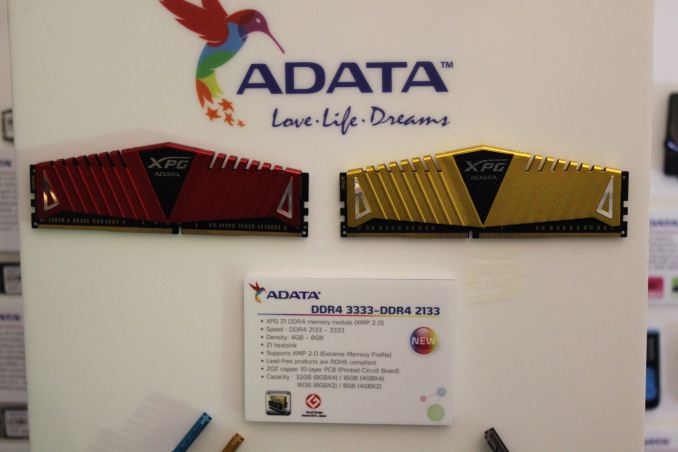










 Quote
Quote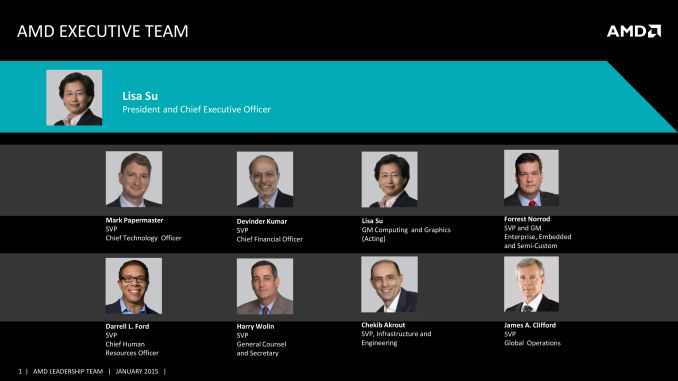



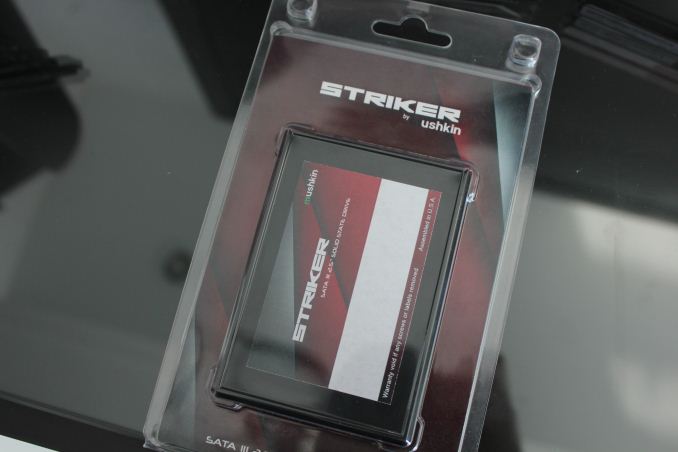















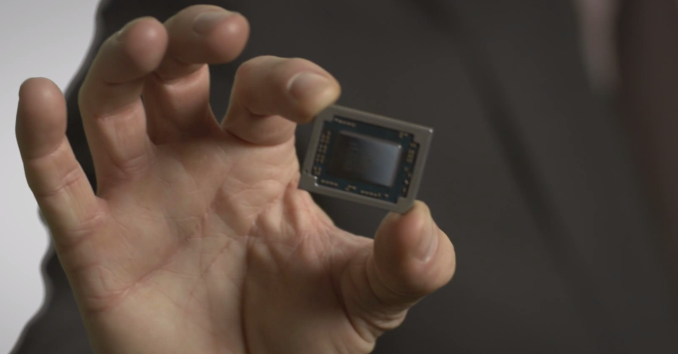
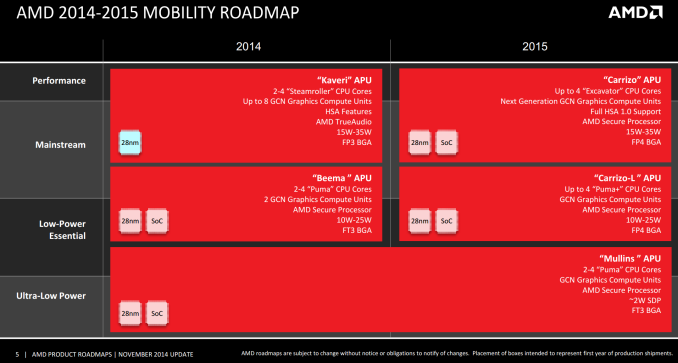

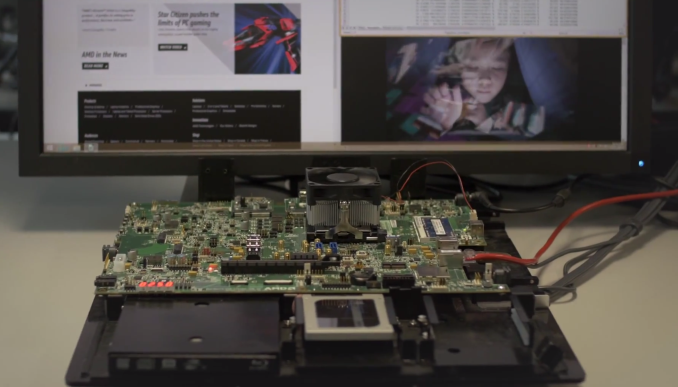
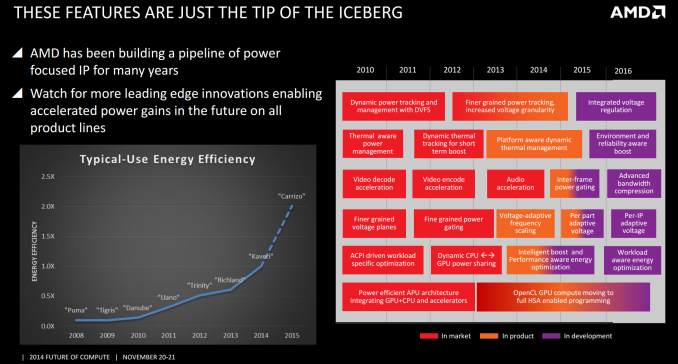
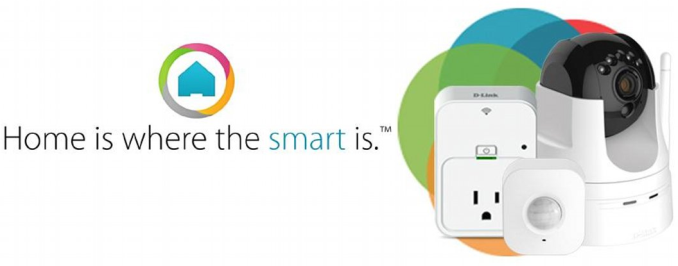

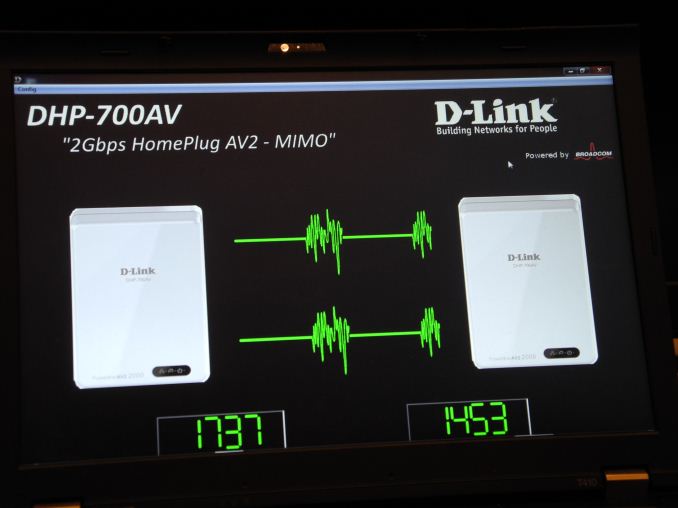
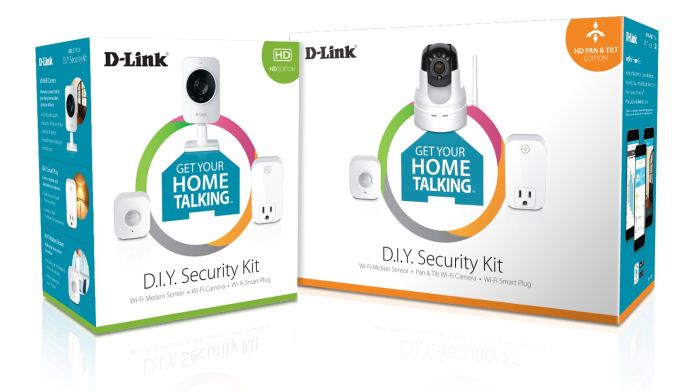
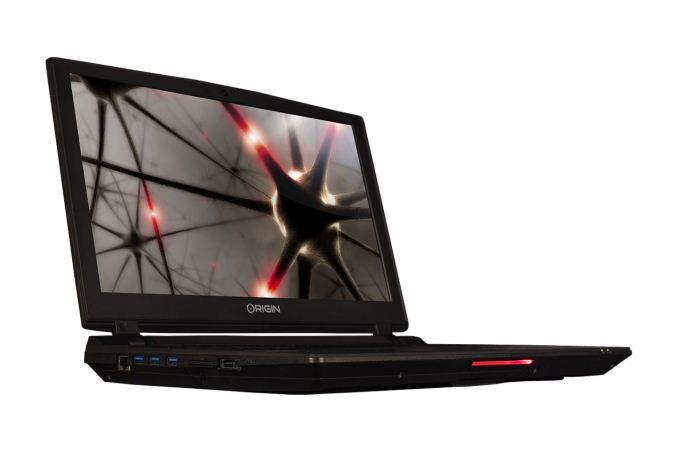
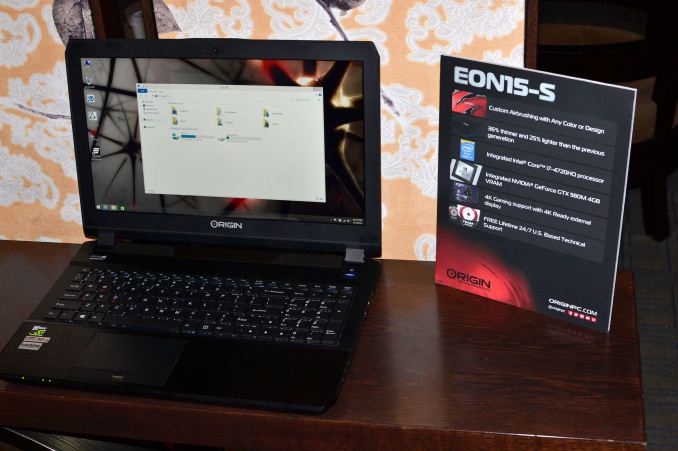
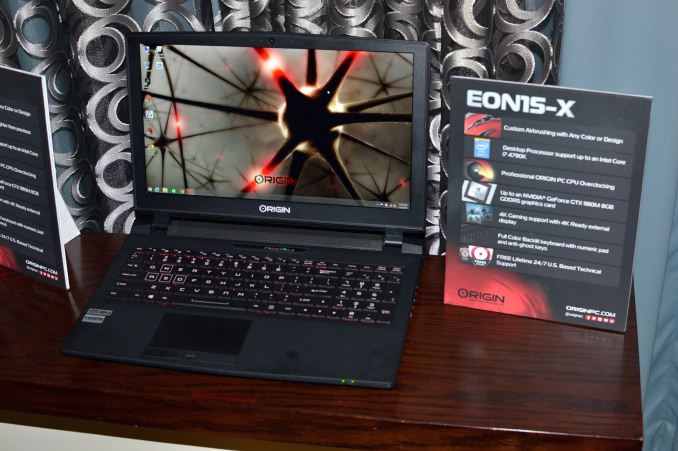
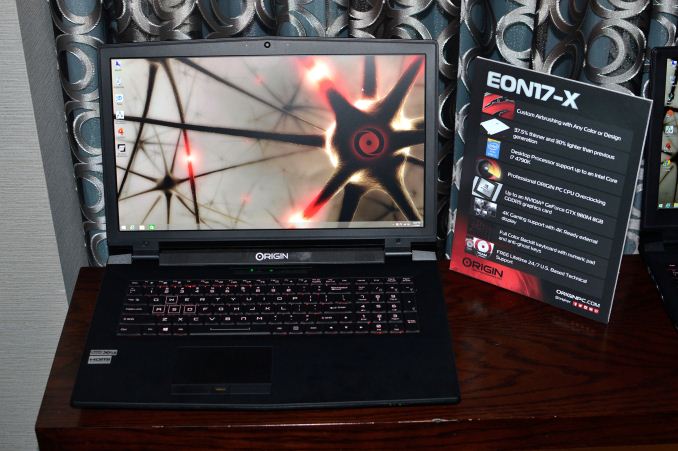
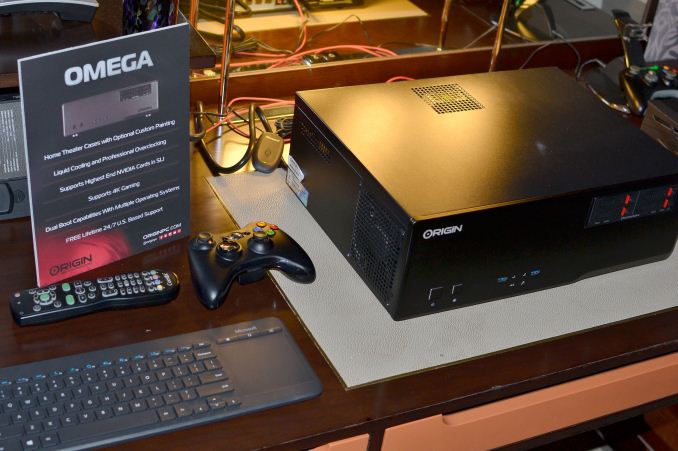
_575px.jpg)
















Bookmarks